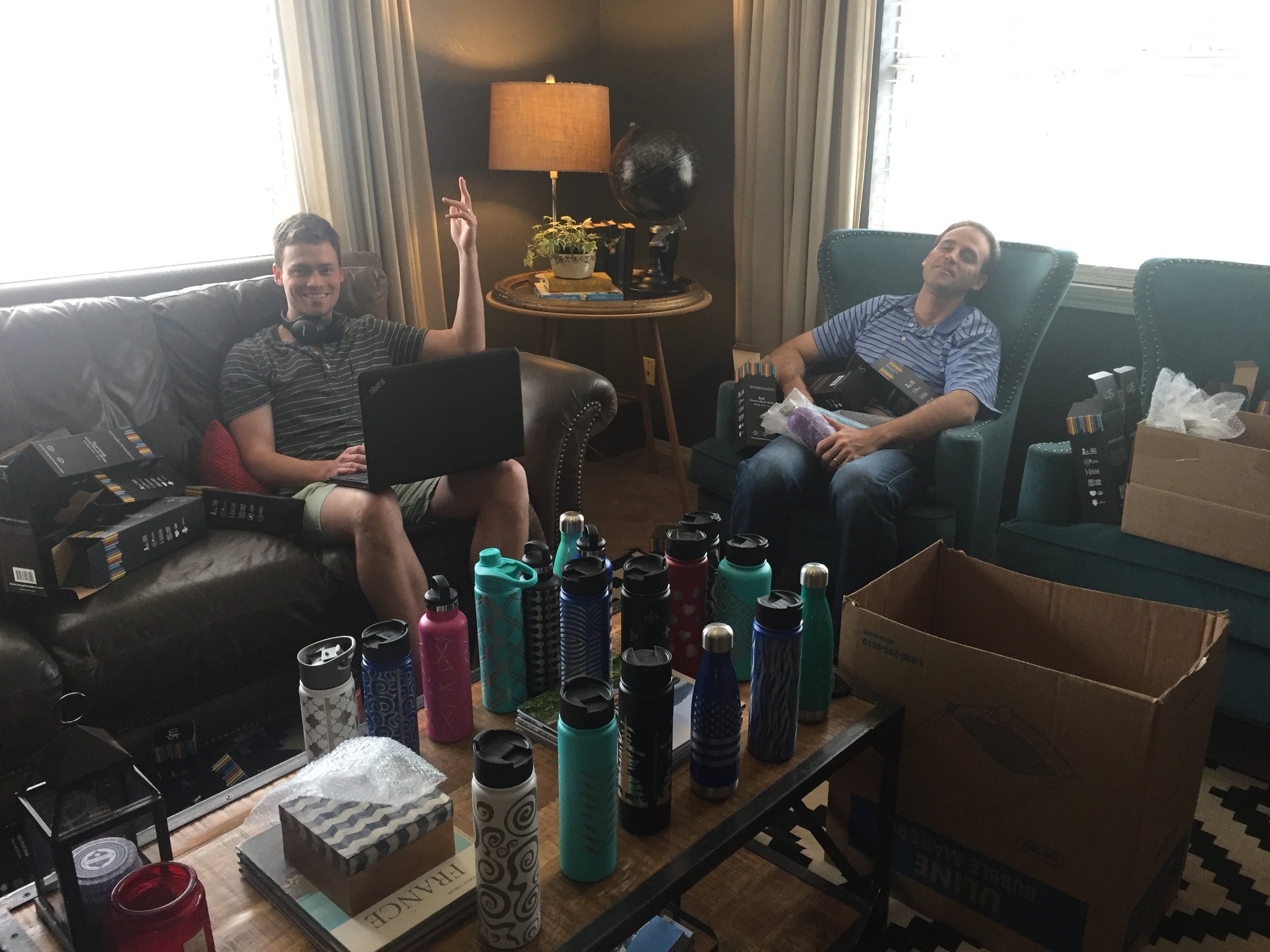How We Founded Simple Modern
Simple Modern Chief Executive Officer Mike Beckham (right) co-founded Simple Modern with Bryan Porter (left) and Micah Ames (not pictured) in 2015.
In 2015, I co-founded a drinkware company. It seemed insane to others at the time as we would be competing with strong brands like Yeti and Hydro Flask. My two co-founders and I only had $200,000 while our competitors had hundreds of millions of dollars. Today Simple Modern sells over $100 million annually.
Here’s the secret to how we did it and a glimpse into the Simple Modern founding story.
Competition Isn’t Bad
Many aspiring entrepreneurs get stuck trying to invent a new product to sell or create something that has never been done before.
This is a trap. 99.9% of successful companies sell an established product in a new way.
Some may say, "But if I sell something other people are already selling, then I'll have competition!" Here is my response to that statement.
Competition always comes with demand. If you're launching a product that has no competition, there are only two possible explanations.
There is great demand, and fortunately, you were the first person on earth to tap into it (Hint: This is very unlikely).
There is not much demand for that product.
Think about it. The most successful companies in the world are selling an improved derivative of an already successful product.
Netflix took existing movies and TV shows and made them available to stream.
Tesla took a new approach to vehicular transportation and created a new type of car that runs on electricity.
Apple upgraded cellular technology and designed a new cell phone with apps and internet capabilities.
You don't have to reinvent the wheel. However, you do need a different strategy than your competition.
How To Find The White Space
There is an easy four-step process that I use to guide my thoughts when I think about differentiating a product or service from those of competitors.
Find a product that has robust demand
Examine the strategies and strengths of existing competitors in the product market
Find white space (i.e. what needs or desires are not currently being met in this market)
Ask yourself “Where do your skills and abilities line up with white space?”
This is exactly the thought process that my co-founders and I used when we founded Simple Modern in 2015. Here’s how it played out for us.
Founding Simple Modern
When we launched Simple Modern in 2015, there were established competitors everywhere in the insulated stainless steel drinkware market. These companies were well run, and there was certainly robust demand for the products they were selling.
We didn't see any way that we could beat them at their own game, so instead we considered what strategies our competitors were not pursuing.
Upon deeper analysis and market research, we observed that, at the time, the leading competitors in the insulated stainless steel drinkware market had initially found success selling in specialty retail stores, such as REI. Their success in these physical retail venues had shaped their retail pricing and margin structure.
Our competitors had higher retail prices and few variations. We saw these as opportunities.
Our competitors built their products for physical retail, not e-commerce, and we recognized that our competitors were underutilizing Amazon as a sales channel.
My co-founders and I had extensive experience selling online, so we believed we could successfully compete in that white space.
We launched Simple Modern on Amazon, taking a digital-first strategy as opposed to a physical retail-focused strategy like our competitors. When we launched, we sold insulated stainless steel drinkware in a variety of colors and sizes not offered by our competitors. Again, we took advantage of the white space.
Simple Modern Today
Our differentiated strategy worked. As we saw initial traction, we reinvested all of our profits into online growth and e-commerce. Seven years later, Simple Modern now sells more drinkware units on Amazon than anyone in the world, and our DTC channel simplemodern.com has experienced tremendous growth, especially in the last year.
Our company’s success in e-commerce has also created opportunities for omnichannel growth, and Simple Modern has grown into a category leader for physical retail partners Target, Sam’s Club, and Walmart.
In fact, Simple Modern’s growing success in physical retail prompted our company to begin domestic manufacturing operations in Oklahoma City in 2022 so that we can better (and more efficiently) meet the needs of our customers and our retail partners.
Competition isn’t a bad thing or something to be feared. When viewed properly, competition has the potential to be an immense catalyst for growth, innovation, and success.
Additional Resources
If you would like to learn more about this topic of innovation and differentiation, I recorded a podcast episode that provides additional insights that may be helpful. Check it out here.
